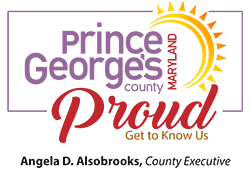
Scoop That Poop
Did you know?
Dog waste is more than a nightmare for our shoes. Just like human sewage, untreated pet fecal matter is harmful to waterways. Rain washes dog waste and the associated disease-causing organisms, such as giardia and salmonella, into rivers, beaches, and bays via storm drains. Enough bacteria make water unsafe for drinking and swimming and also contribute to shellfish bed closures. Pet waste left anywhere is a potential public health risk. Pet waste on playing fields, sidewalks, or parks can be unhealthy and messy. Even at home, responsible pet owners should throw pet waste in the trash or flush it down the toilet to prevent water pollution associated with bacteria-laden waste. Less dog waste in the watershed means a happier and healthier community for all.
The management of pet waste is an important issue for the people and environment of Prince George’s County.
Human Health:
Pet waste contains disease-causing organisms that can be transmitted to people, pets, and wildlife. Fecal coliform, bacteria, salmonella, roundworms, and giardia can remain in your yard for weeks and months if not cleaned up.
Quality of Life:
Civic pride- Areas left messy with pet waste are unattractive and degrade the quality of life for residents. Pet waste discourages people from coming to local shopping districts and visitors from enjoying local parks and can contribute to lowering property values.
Water Quality:
Pet waste left on the ground also mixes with stormwater runoff and the contaminants are carried to nearby waterways, like the Anacostia River, where we swim, fish, and play.
The Pet Waste Management Initiative launched in 2016 to educate residents about the dangers of pet waste containing certain bacteria, viruses, and parasites that can cause disease in humans and pets when left on the ground, and to affect behavior change and implement best pet waste management practices. It includes the production of the Scoop That Poop video, pet awareness programs, and the installation of more than 200 pet waste stations in communities across the County.
More than 40 collaborating municipalities, and a dozen homeowners and civic associations have established pet waste management programs where they have committed to installing, maintaining, and monitoring pet waste stations and promoting pet waste management with customized educational materials, including the “Scoop That Poop” video. Watch the video below.
The campaign has also helped reduce the amount of nutrient and bacteria pollution from pet waste in local waterways, as well as improve community aesthetics and health. DoE encourages the public’s involvement in restoring and protecting water quality. The program educates the public about the impacts of their daily activities on the health of their waterways and helps foster a general understanding of watersheds and water quality health, promoting behavior change and support for restoration projects.
If you are interested in establishing a pet waste program for your community or need more information, contact Carole Barth at cabarth@co.pg.md.us.
